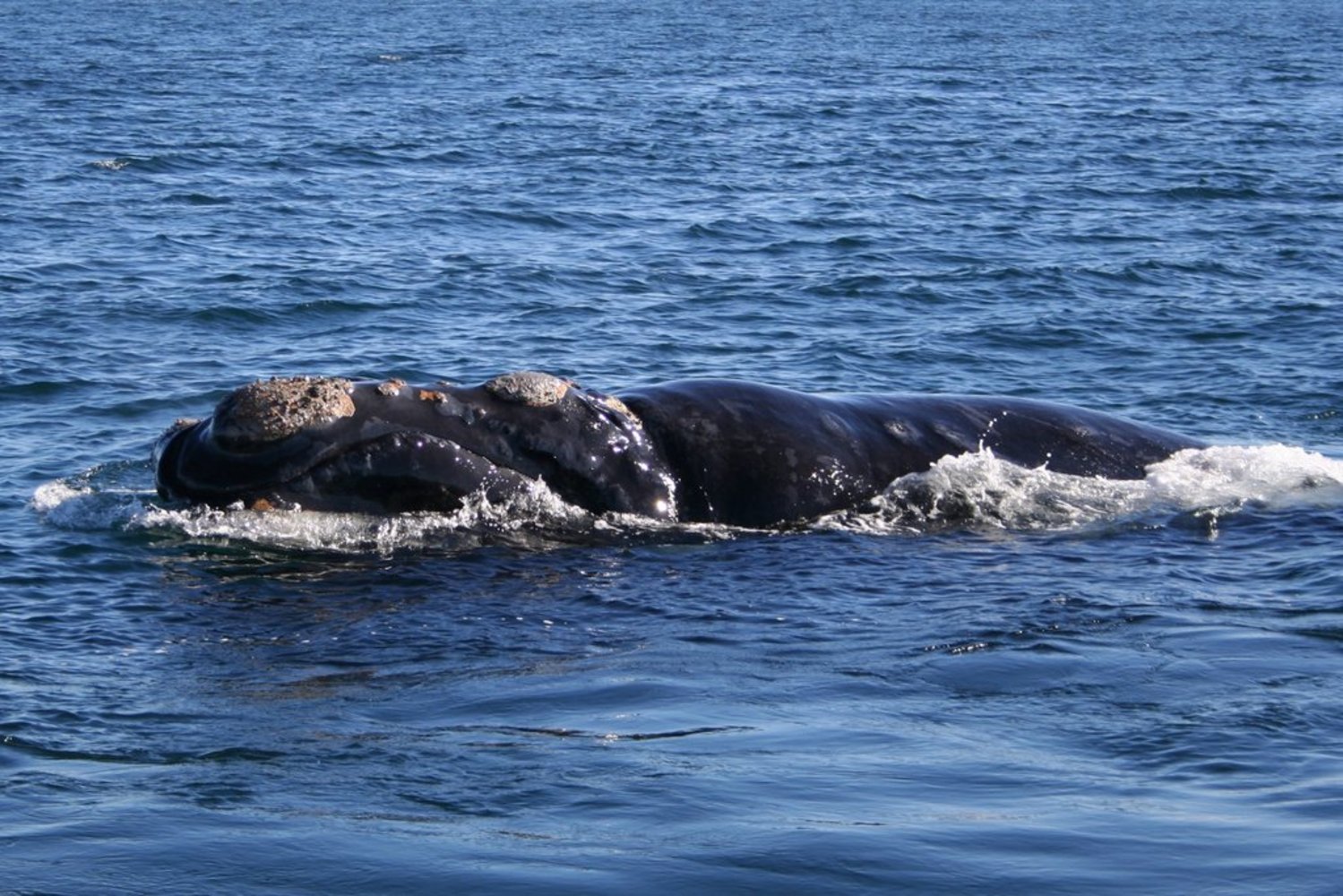Whooooshhhhhh. The sound was explosive, despite my head being under water and tightly encased in a 7mm wet suit hoody. Startled, I surfaced, just managing to sight the remnants of the twin sprays from the blow of a young southern right whale (SRW). I had in fact been in search of the sevengill sharks, which can be found in the kelp beds of De Kelders in Walker Bay near Cape Town, South Africa. But it would seem that our snorkelling group had attracted the attention of a curious SRW youngster. We tried to carry on, but the whale was too busy trying to work out what we were, that he neglected to notice the kelp he was getting entangled in. With the arrival of the calf's concerned mother, we decided it would be best for all parties if we exited the water.
 As we sat on the rocks above the bay watching the mother and calf wallow in the still waters, we discussed how little we all knew about this large sea mammal. Whale-watching is big business, not only in South Africa but across the globe, and yet the SRW is more than a little mysterious.
As we sat on the rocks above the bay watching the mother and calf wallow in the still waters, we discussed how little we all knew about this large sea mammal. Whale-watching is big business, not only in South Africa but across the globe, and yet the SRW is more than a little mysterious.
The name 'right' comes from whale hunters, who noted that when the animals were killed, they floated, making them an easy catch and therefore the 'right' whale to hunt.
The southern right whale spends its summer down near the Antarctic, fattening up on small crustaceans, such as copepods, as well as krill and other zooplankton. Both the male and female migrate up to around 60° south in the winter, a journey of many thousands of kilometres. The sheltered bays found along the coastline offer the safety and security the females crave in order to give birth and nurse their calves.
Female southern right whales return to the same chosen site each year to give birth, perhaps because it is where they were born themselves, although that is not clear. However, the whales do not spend any time at these sites while they are pregnant, although why we don't know, and where they do spend their winter pregnancy is also unknown.
Little more is known about the male southern right whales, except that they do not seem to have the same degree of site-fidelity as the females. Unfortunately, research into this question has been hampered by difficulties determining a whale's gender from the surface. At this stage, sex can only be confirmed from observing the genitalia.
The face of the SRW is covered in callosities - outgrowths of skin which allows crustaceans, known as 'whale lice', to cling on. This is what makes the skin white and rough. But as the SRW spends most of its time near the surface, 'finger print' software can be used to identify the whale population from the complex patterns created on the whales' skins by the colonised callosities.
The whales become sexually mature in their ninth year, with pregnancy usually lasting 12 months, and a calf taking just as long to wean. One reproductive cycle, on average, takes three years resulting in a single calf. What we don't know is where conception takes place and what triggers a mother to wean her calf.
It appears that the SRW is polyandrous, meaning a calf is the product of a mother mating with many males. If this is true, then there must to be some mechanism that the female uses to choose the 'best' sperm to conceive by. But why is this important?
 Well, the birth and weaning of a calf is a very solitary affair, carried out by a female with no known help from other males or females. A huge amount of her energy is used in accomplishing this feat. Imagine producing 600 litres of milk a day for three to four months, and on top of that, not even being able to eat during this time. That is the life of a new southern right whale mother.
Well, the birth and weaning of a calf is a very solitary affair, carried out by a female with no known help from other males or females. A huge amount of her energy is used in accomplishing this feat. Imagine producing 600 litres of milk a day for three to four months, and on top of that, not even being able to eat during this time. That is the life of a new southern right whale mother.
The drive to survive is a dominant factor in our living world. All animals, from a single cell amoeba to a complex multi-cellular organism like a human, make choices in order to ensure their progeny are successful. The female southern right whale is no different. Her chance only comes around once every three years, so she has to be sure that her next calf has the best chance in life with the best genes she can find from the males on offer.
The southern right whales are not social animals as we understand the term. Unlike dolphins and orca whales, the SRW seem to have a less complex sound repertoire. Which begs the question, how do these animals find one another in order to mate?
Considering that the southern oceans are tens of thousands of square kilometres in extent, how is it that a female SRW lets the males know that she is ready for mating? And, secondly how does the male then find the female once he's got the message?
Just imagine how sensitive he must be not only to detect the oestrous female but to find her in an enormous ocean. Searching for a needle in a haystack would be easy!









Comments
Add a comment